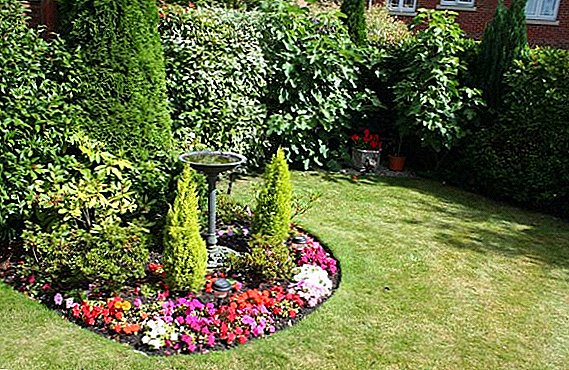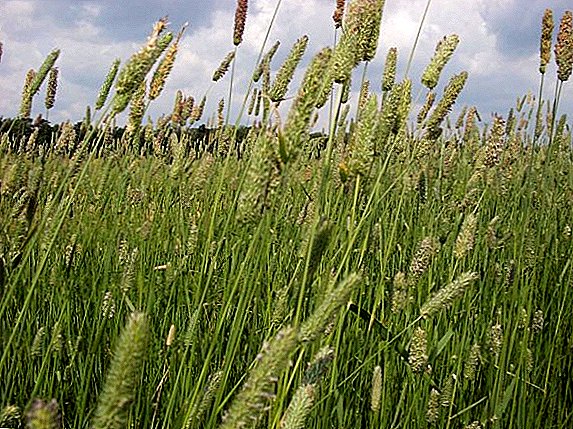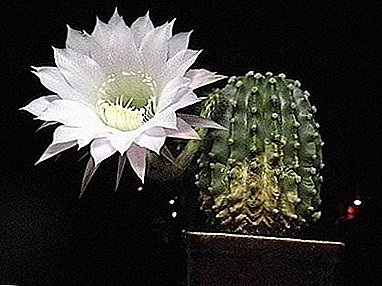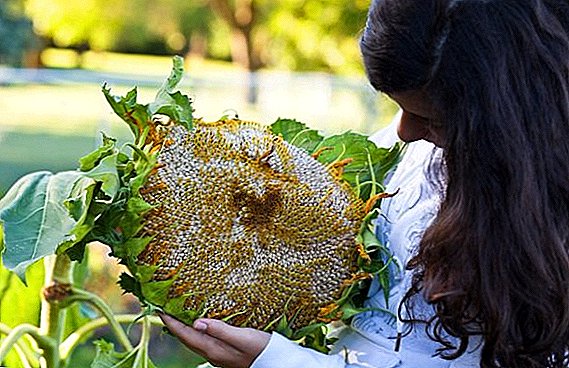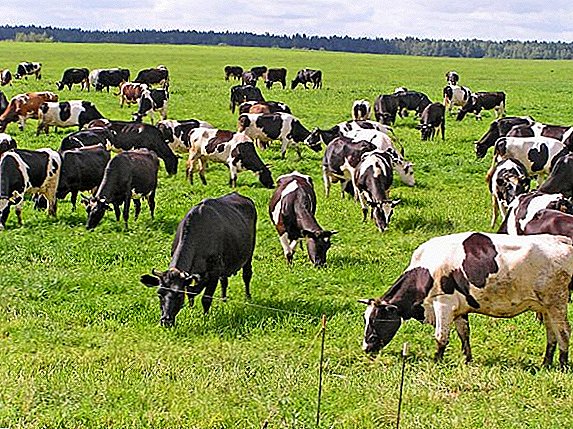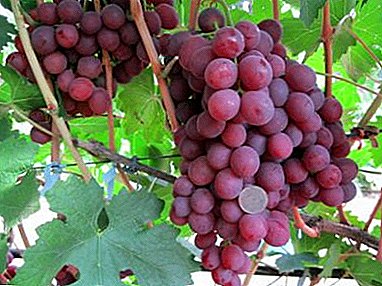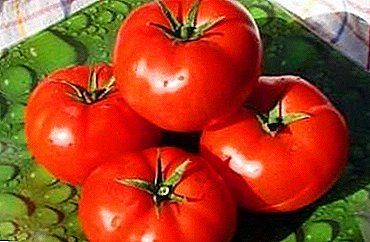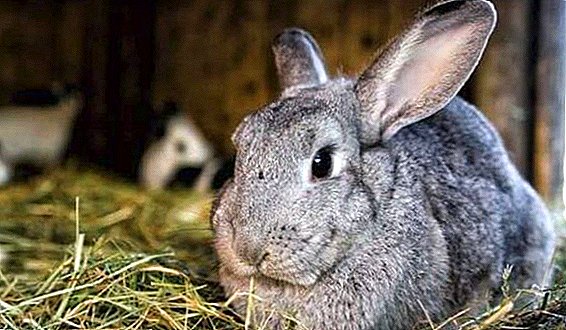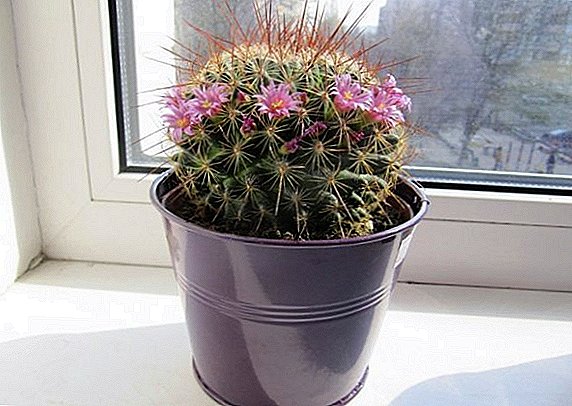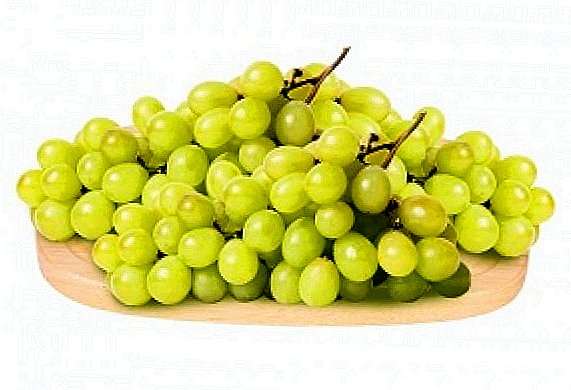
The grape raisin is known for a long time, most likely it is the result of a natural mutation, fixed with the help of chubukov (vegetative reproduction).
Later this grape was selected, which led to the creation of many varieties with underdeveloped seeds.
Consumers are popular varieties of raisins in which the sugar content is not less than 20%.
In addition, it is important to note, another feature of grapes of seedless varieties, all of these varieties are excellent pollinators. Therefore, if you want to have a rich, fruitful vineyard - plant sushi. He will not fail.
Grade "Kishmish Radiant"

Sure, it's high quality and high-yielding variety. Bushes his strong and sredneroslye. The leaves are medium in size, heart-shaped, long petiole, leaf color is light green.
The berries are large or medium, the sugar content ranges from 17 to 21%, and the acidity from 6 to 7g / l. Their size is from 22x17mm to 25x22mm, weight from 2.5 to 4 g. Clusters can be up to 40 cm in length.
This variety has certain requirements for care, resistance to diseases (gray rot, oidium) at the level of three to four points. Ripe grapes tolerates transportation and storage.
Yield - Grape clusters very large, large, the weight of one bunch can reach a kilogram, the shape is cone-shaped. The berries are elongated, large, their color is bright pink, the aroma is muscat, the flesh is dense. Harmonious taste with a slight nutmeg flavor.
The term ripening - 125-130 days, early-medium
Virtues - early maturation, increased yield, transportability.
Disadvantage, oddly enough, is the same as dignity - too big a harvest. Heavy clusters overload the bushes, as a result of which very often the branches break.
This grade not frost resistant.
This variety prefers space, planted by winegrowers at a distance of 2-2.5 m in a row, and 3m in the aisle. Planting pollinator is made at intervals between the "female" varieties with the same flowering time.
The bush is formed on the basis of 7-8 shoots per meter, sometimes up to 8-10 shoots. Between the adjacent sleeves should remain a space of about a meter. Most extended pruning in 8-12 eyes. At the exit of 20-25 shoots of 4-6 square meters. meters For young bushes, the total load, of course, is less - 8-12 shoots.
The variety prefers forming with a significant supply of wood. Recommend not to leave more than 30-35 eyes of the total load. For pruning, you need to look situationally; new sleeve - short trim, for 2-3 peepholes; old sleeve - long trim, 10-14 holes.
At the exit we have the result of 2-4 vines meter long or more. The bottom of the vine is involved in the formation of the sleeve, and the remaining 5-10 eyes - for fruiting. Pruning is important for optimal brush formation in 1-2 large clusters to escape.
Too much stress on the grapes threatens potassium starvation, grinding the berries, lowering its sugar content, cracking, and wateriness. In addition, overloads lengthen the time of ripening grapes.

You can plant grapes in the spring and autumn. In the spring, approximately (depending on the microclimate on the ground) from the third week of April to the third week of May, lignified annual seedlings are planted, and later, until the end of June, green vegetative plants are planted.
Autumn planting begins in October and extends until frost. It differs from the spring, only in a more careful protection of the sapling, because it has winter ahead. To this end, the seedling is first covered with a clipped plastic bottle, with 3 holes. The soil is watered with three or four buckets of water.
Before the frost arrives, seedlings are covered with sawdust, peat, pine needles, covered with a pit. Perhaps the use of conventional soil. In this case, the hole is filled up and a small earthen hill of up to 30 cm is thrown on top.
When caring for this variety, you should remember about the danger of overloading the bushes. Therefore, it is imperative provide branches with additional supportsand arrange the number of shoots.
It is necessary to water the vineyard moderately and regularly. The amount of fluid required depends on the type of soil. So, for chernozem it is 5-6 buckets, for sandy soil - up to 9 buckets.
2 weeks before harvesting, we stop active watering. The soil around the landings and between the rows must be irrigated little by little, which will make it possible to increase the overall humidity. Kishmish responds well to drip irrigation.
In order to increase the green mass in the early spring produce fertilizing with nitrogen preparations. Later, according to the instructions used plantfol. According to the season, use is made of potassium monophosphate, sulphate, magnesium sulphate. Begin to feed before flowering, in the so-called phase of three leaves. It will be useful at the same time disease treatment.
Do not overfeed the grapes - this may cause a delay in the appearance of color, and not enough formation of the ovary.
A few words should be said about the protection of grapes from frostbite: small shoots should be covered, those that are larger should be insulated with straw mats, old ones should be protected with “houses”. The use of tyrsa for insulation is not justified, because it dampens quickly enough, and, moreover, acidifies the soil.
To avoid potential problems with sashmish one should constantly remove weaker vines, it significantly affects the increase in yield.
"Kishmish №342 (Hungarian)"

Hungarian variety that has gained popularity among us. The bushes of this variety are vigorous, the berries are of medium and large size. Sugar 19-21%, acidity in the range of 6-8 g / l.
Their size is 15x17mm, maybe more. Weight from 2 to 3.5 g. Color-green-golden, shape - ovoid. Clusters - medium or large, from 300 to 500g.
Despite the fact that the variety is very early, its taste is unparalleled. The flesh is juicy, fleshy, with a delicate muscat flavor. Having matured, it can hang on the bushes for a long time (up to 2 months).
Productivity - high
The term of ripening is 110-115 days, early.
Virtues - increased resistance to fungal diseases, good frost resistance (up to -24-26 ° C), due to its early ripening period, is able to be grown in non-traditional regions for growing grapes, because of its thin skin, easily absorbed by children, transportable.
disadvantages - easily loses its commodity properties when overexposed to the bushes, it may contain, as rudiments, seeds, a small cluster.
Traditional planting of grapes is made, there are no special requirements.
Landing dates, too, without much difference.
Unpretentious, does not impose additional requirements for care. As most grapes require shelter for the winter//agronomu.com/cpost/rastenievodstvo/vinogradorstvo/posadka-i-uhod/ukryvaem-vinograd-na-zimu-pravilno.
It is also interesting to read about the best grapes of black grapes.
Grape variety "Rusbol Superior"

In the mass media one can also find such a name of this variety as 13-3-6-2 Elf. Form bred by Russian breeders. Difficult crossing, initial varieties І-15-3-1 (Villars Blanc x Delight) and Rusbol.
The bush is large, the flower is bisexual, the clusters are large, sometimes even more than 1.5 kg., Have a conical shape, the density is medium. A mass of berries 2-2.5 g, size 20x16mm, oval, white, get a tan in the sun. The thickness of the skin is medium, the flesh is dense, the taste is harmonious. Sugar from 20 to 22%, acidity in the range of 5-6 g / l. Fruits in the 2nd year.
Yield - high
The term of ripening is 105-115 days, very early.
Virtues - increased resistance to gray rot and mildew, good frost resistance (up to -25 ° C), because of the early ripening period, is grown in places where it was previously not known about grapes and can withstand transportation.
disadvantages - a large crop damages bushes, requires rationing, may contain rudiments.
Special requirements for landing does not impose.
Traditional landing dates.
This hybrid variety gratefully responds to the use of phosphorus-potassium fertilizers. Attentive, careful care contributes to the formation of clusters on the bushes more than 1.5 kg.
About the variety "Reliance pink Sidlis"

This grape is a guest from the States. The vigorous bushes, clusters of cylindro-conical shape, moderate density, weight from 100 to 300 g. Small berries, 1.4 - 2 g, color - pink, pleasant taste, has a slight aroma of labrusque. The berries are juicy, soft, rudiments, if they are found, they are very small. Sugar up to 24%, acidity from 6 to 7 g / l.
Productivity - high.
The term of ripening is 105-115 days, very early.
Virtues - increased resistance to mildew, excellent frost resistance (up to -27 ° C); it hangs on the bushes for a long time, even when showered it retains its marketable shape, pleasant sponge-like taste, which is compared to strawberries, strawberries, pineapple, duchesse, barberry, good transportability.
disadvantages - at high humidity during the ripening period the berries crack, small berries.
Like any light-loving plant, it should be planted in a well-coordinated place. There are no special requirements, it grows well on any soil, with the exception of highly humidified, and saline.
Common landing times.
Does not require shelter for the winter, unpretentious.
Kishmish Jupiter - American miracle

This grape is also the result of American selection. Bushes of medium size, the mass of clusters from 200 to 500 g, the shape of their cylindro-conical, moderate friability, perhaps a small amount of rudiments.
The berries are large, even large, their weight is from 4 to 7g, the shape is oval, the color is saturated pink, maybe red; fully ripened berries reach a dark blue color. The flesh is juicy, fleshy.
Pleasant, light muscat taste. Durable thin peel that is resistant to cracking. Sugar 21%, acidity 5-7 g / l. Fruit "Kishmish Jupiter" in the 2nd or 3rd year, moderately resistant to fungal diseases
Yield is high and stable
The ripening period is 105-120 days, very early.
Virtues - excellent frost resistance (up to -27 ° C), wasps are not damaged. berries are resistant to cracking.
disadvantages - small clusters.
The traditional method of landing.
Common landing times.
Does not require shelter for the winterunpretentious. But, if you do not live in the South, it does not hurt to cover the vines for the winter for a guaranteed harvest. It is quite enough if, after pruning, you remove the grapes from the tapestry, pin it to the ground, and cover with agrofabric (one layer is enough).


